LED Facemasks vs Red Light Therapy Panels: What Are the Pros and Cons?
The desire for youthful skin is not new but is a goal that, thanks to modern technology, has become easier to attain.
Chances are good that you’ve heard about one of the latest and hottest crazes in skincare: LED facemasks. They are devices that look like a face shield and bring wavelengths of light to your face that work to improve your skin in a number of ways, including helping it look more youthful.
With so much hype around LED facemasks, it may be hard to tell what is fact and what is fiction and whether these devices are the best option for red light therapy. They claim to boast countless benefits, but do they deliver what they promise?
Manufacturers and advertising experts have been capitalizing on the hype surrounding this technology, which has led to an increase in products that may not actually deliver results. And some of the latest research has found that some LED face masks may not be as effective as they claim and are ultimately limiting the benefits of light therapy.
With all the hype around LED face masks, you may be thinking about trying them out for yourself. However, before you decide to drop $200-300 on a face mask and before we write them off entirely, let’s dive deeper. We are sharing some information with you that will help you make an informed decision about whether an LED face mask or a red light therapy panel is best for your needs.
So, let’s take a look at the benefits and drawbacks of both so you can decide which is right for you.
What is red light therapy?
Red light therapy is more than just skincare – it is full-body wellness. The list of red light therapy’s benefits isn’t limited to just the face or even just the skin. On a basic scientific level, red light therapy boosts cellular energy production–ultimately allowing you to produce and use energy more effectively. Red light has been shown in numerous studies to enhance cellular function, by stimulating the mitochondria in our cells to produce more ATP cellular energy. This means that whereever you shine the device, those cells and body systems are given the energy necessary to heal.
Thus, one of the glaring downsides of LED facemasks is that they limit the number of benefits you can get from red light therapy by isolating just the face. With a red light therapy panel, on the other hand, you get the same skin benefits that an LED face mask offers, but you also get the added benefits that red therapy offers to the rest of the body (which extend across your entire body).
Not all LED lights are created equal
According to the latest research on LED light therapy, not all LED lights are created equal – this includes things like: LED light power (also known as irradiance), light spectrum (the colors of the LED light), and light spectrum specificity (the precision of the LED light wavelengths). Let’s break these down.
LED light power (or irradiance as it is known in the community) essentially tells you how powerful the LED lights in the device are. The more well-known brands of LED masks have turned up very little data on the irradiance (or power) of their devices – leaving consumers with more questions than answers. Specifics on wattage, beam angle, energy output, and other important information are simply not provided. Conversely, Vital Red Light Therapy panels have been tested by a third-party lab, are medical-grade, and the results are available for you to see.
The lack of information on the power of LED masks makes it difficult to compare them to light therapy panels. But we do know that not all LEDs emit the same amount of light. Unfortunately, many of the LED facemasks on the market don’t even tell you what wavelengths of light they emit. This is a huge red flag for any product because it means you have no idea whether those wavelengths are even effective at producing collagen or elastin. Before you purchase a device, make sure that they provide insights on wavelength, and power, and make sure to ask if they have been third-party tested. <br> <br>
Many of the LED facemasks on the market use blue light and other light spectrums that could have deleterious effects on your skin and body – depending on what you are hoping to achieve. Though blue light does aid in killing bacteria and combating acne, it simultaneously emits high energy which can be damaging to your skin’s collagen and cause premature aging. [1] It is well known that most dermatologists and skin experts actually advise using red and near-infrared light for acne and acne scars because it has been shown to have the same effect as blue light with much fewer side effects. The color of your device matters, and this means that LED facemasks could be causing more damage to your skin than they are fixing.<br> <br>
By opting for an LED mask without having access to the specs, you’re taking a gamble on the efficiency of your treatment and may end up wasting your money. <br> <br>
If you’re still curious about LED facemasks, let’s take a look at some of the pros and cons and compare them to using LED light panels.
Benefits of LED masks
Convenience
However, this benefit comes at the cost of effectiveness. Because you’re moving around, most of the light in an LED mask won’t reach your skin deeply enough to stimulate new collagen production or improve circulation – both are functions that depend on deeper penetration of tissue.
Ease of use
Cost of device
We’ll get to why red light therapy panels are a better investment in the “cons” section below.
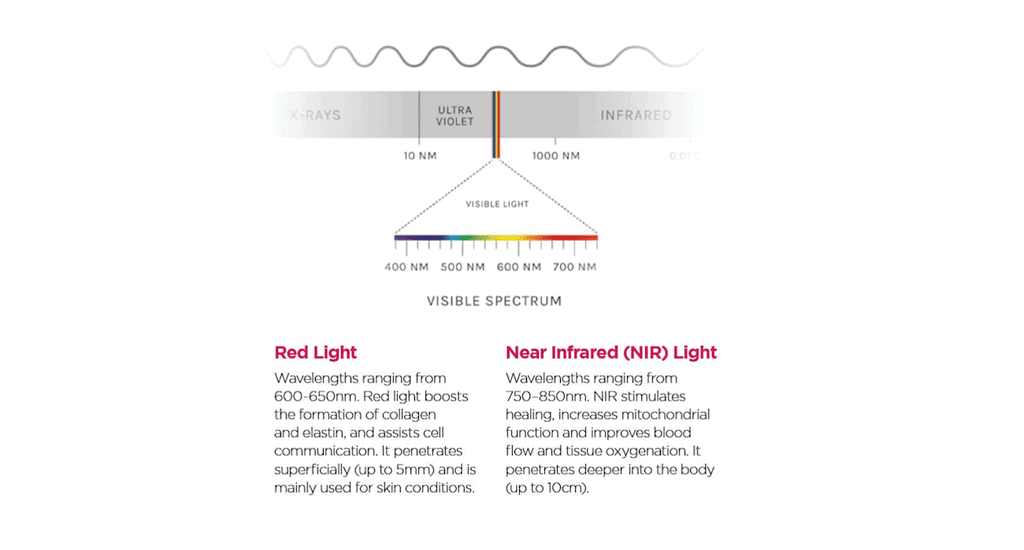
Light spectrum: Some allow you to switch from red light to blue, green, yellow, and white
The lights used in legit red light therapy panels (red and near-infrared) are targeted wavelengths that penetrate deep into the skin and promote healing. A broad spectrum of light (as used in most LED facemasks) will not be as effective and may cause damage to your skin. This is because blue light, which is included in many LED facemasks, penetrates only the surface of the skin, and, as mentioned above, causes photo-aging by generating free radicals.
For this reason, it’s important to choose your LED mask from a reputable company that uses high-quality LEDs with a narrow spectrum of non-damaging wavelengths (red and infrared).
Cons of LED masks
They are often weaker than LED panels
The light from LED facemasks does not seem to penetrate very deeply into the skin and may not cover enough surface area to make them effective. Research shows that red light therapy is effective when placed between 6 and 18 inches from the skin. [2] This distance allows for highly concentrated irradiation while covering a greater surface area.
Studies show that red light therapy can penetrate between 4 and 10 millimeters, with an average of 6 millimeters. [3] So if you’re using a device that doesn’t offer at least 6 millimeters of penetration, you’re missing out on part of your skin that could benefit from treatment.
Most LED facemasks lack research
While promising, there isn’t enough scientific evidence to get excited about LED masks. Research has been done on clinical, medical-grade devices, but the at-home LED facemasks available for sale do not have the research backing them to confirm that they offer the benefits you’re looking for.
Vital Red Light panels, however, are medical-grade and have been tested by a third-party lab to ensure their safety and efficacy.
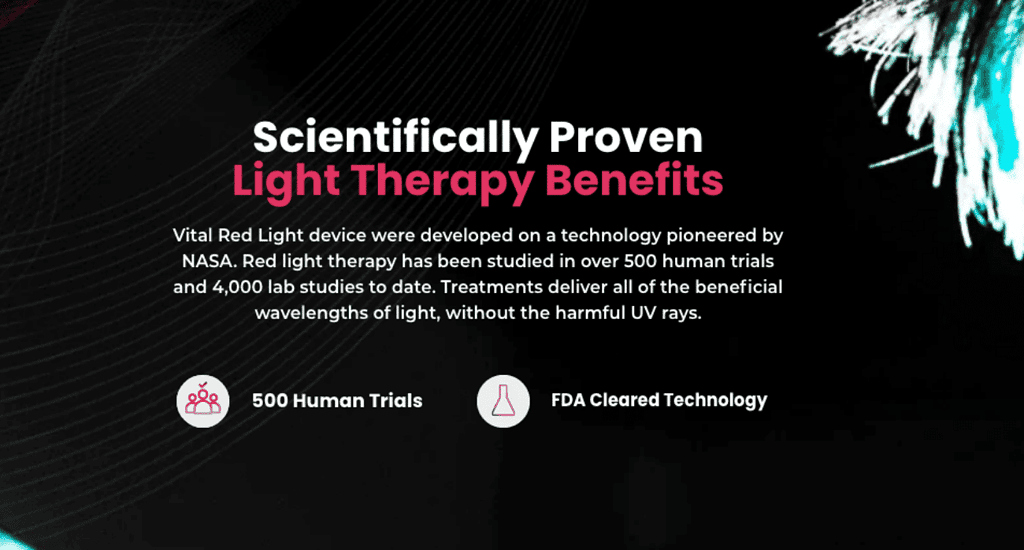
They lack vital information
Most LED facemasks do not come with all the information you need to know if they’re effective. Thus, they can end up being a complete waste of money.
It’s better to spend your money on affordable red light therapy panels such as the Vital Charge, a portable, handheld light therapy device designed for positioning at the optimal 6 to 18 inches from your skin. Other bigger panels such as the Vital Elite provide therapy for your face as well as other areas of the body where red light therapy can be beneficial.
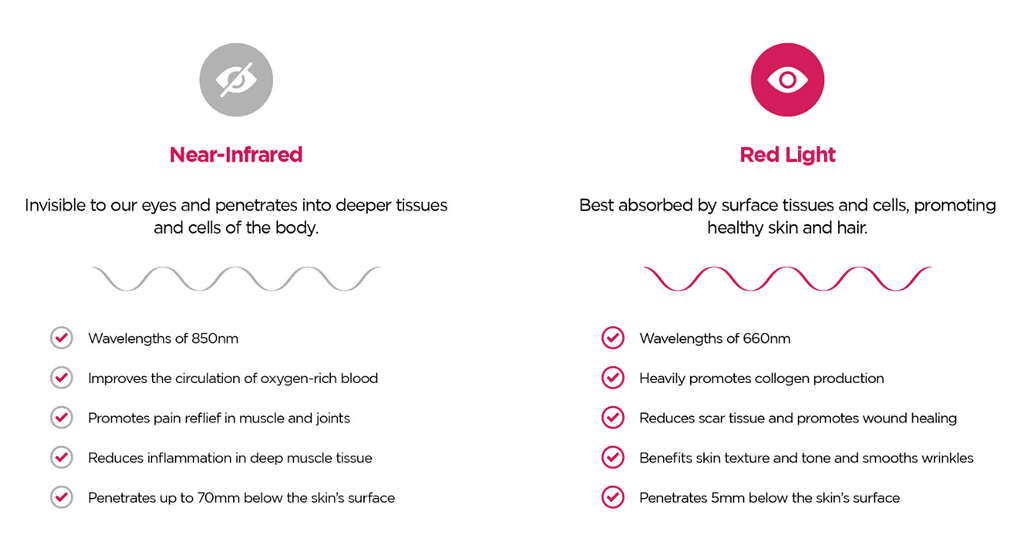
Most do not use near-infrared light
While red light most known for skin rejuvenation and collagen production, near-infrared light gets deeper into the body and can aid pain & inflammation support, bone repair, muscle recovery, and many other problems. Most LED facemask devices only use red light and leave out the critical near-infrared wavelength of light that helps with so many other issues.
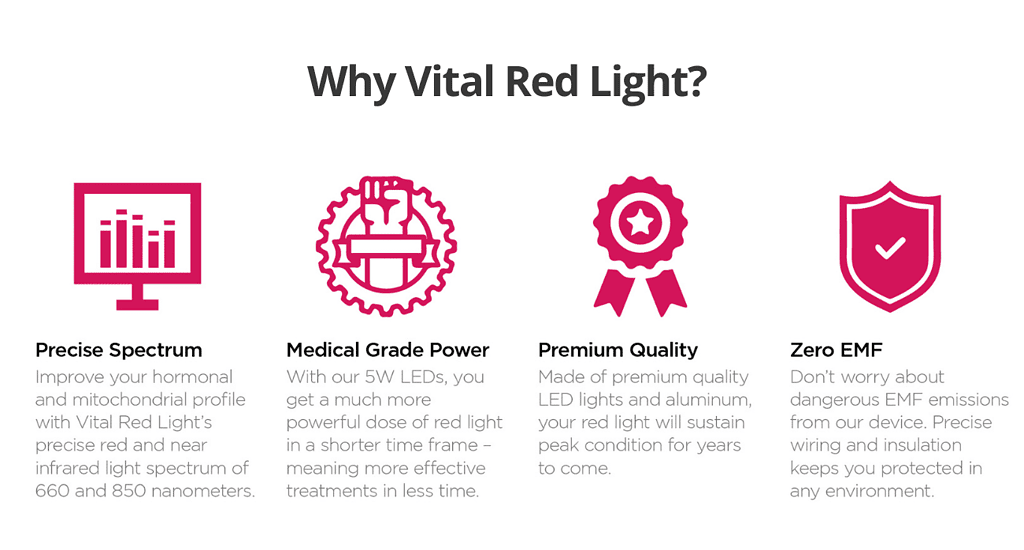
Making an informed decision about LED light therapy
Conclusion
Though LED facemasks are convenient and less expensive, you don’t get the strength of light that you do with a red light therapy panel. And, there isn’t nearly as much scientific evidence backing up the claims of efficacy with LED facemasks as there is with red light therapy panels.
The only way to guarantee that your red light therapy device will provide you with the benefits it claims to is if you opt for one that is medical-grade and has been tested by third-party labs to ensure that they are safe and effective.
While you may have to do some homework to determine whether the red light panels you’re looking at are legitimate, Vital Red Light makes it easy for you.
We guarantee that all of our devices are medical-grade and third-party lab tested to ensure that you’re getting the highest quality devices that will provide you with the results you’re looking for.
For an optimal red light therapy experience in your home, a full-body LED panel product like Vital Elite is the best choice.
Citations:
[1] Arjmandi, N et al. “Can Light Emitted from Smartphone Screens and Taking Selfies Cause Premature Aging and Wrinkles?.” Journal of biomedical physics & engineering vol. 8,4 447-452. 1 Dec. 2018, https://www.ncbi.nlm.nih.gov/pmc/articles/PMC6280109/
[2] LED light therapy: How it works, colors, benefits & risks. Cleveland Clinic. (n.d.). Retrieved April 14, 2022, from https://my.clevelandclinic.org/health/treatments/22146-led-light-therapy
[3] Ash, Caerwyn et al. “Effect of wavelength and beam width on penetration in light-tissue interaction using computational methods.” Lasers in medical science vol. 32,8 (2017): 1909-1918. doi:10.1007/s10103-017-2317-4, https://www.ncbi.nlm.nih.gov/pmc/articles/PMC5653719/



